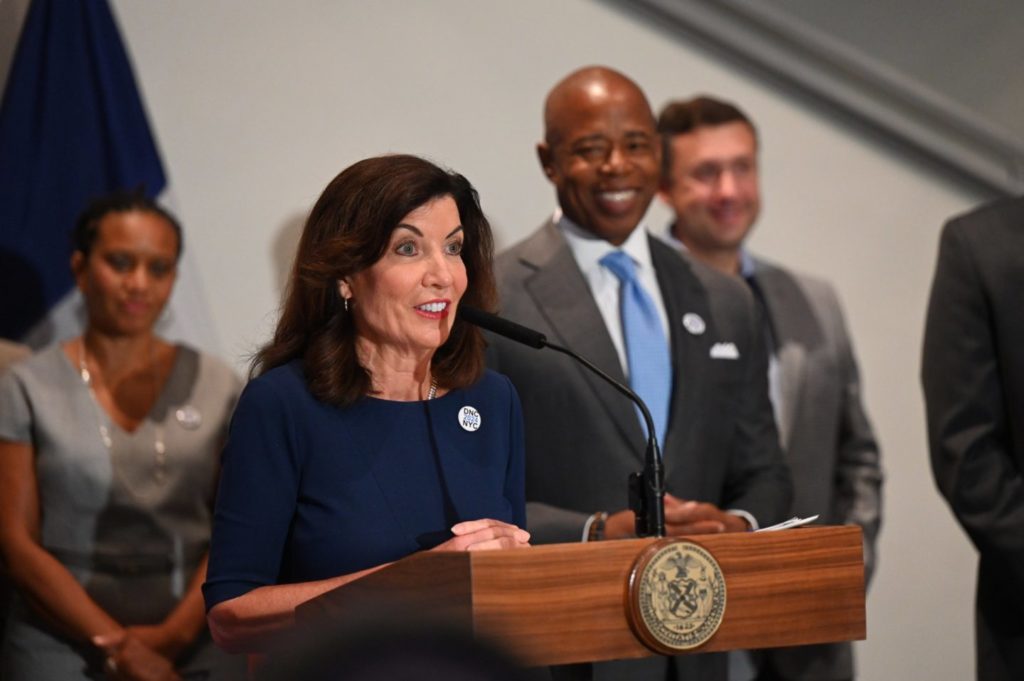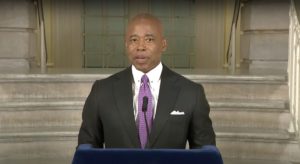New York educators bemoan ‘budget cuts’ despite a billion-dollar increase
New York educators are up in arms about Gov. Kathy Hochul’s proposed budget for 2025, even though it includes a billion-dollar increase for public education.
Hochul’s proposed $233 billion…

New York educators are up in arms about Gov. Kathy Hochul’s proposed budget for 2025, even though it includes a billion-dollar increase for public education.
Hochul’s proposed $233 billion budget would close a $4.3 billion deficit without raising income taxes, while ostensibly dealing with the state’s migrant crisis and increasing year-over-year education funding.
“We can’t spend like there’s no tomorrow because tomorrow always comes,” she said during her budget address. “Our discipline now will keep us out of a deeper hole in the future.”
The proposed 2025 budget allots over $35 billion for School Aid, which includes an $825 million increase to school aid and a $507 million increase to Foundation Aid.
Both School and Foundation Aid go toward K-12 education, but Foundation Aid is distributed differently, as it’s intended specifically for high-need districts.
Yet despite getting a $1.3 billion budget increase, New York educators are complaining that Hochul’s funding amounts to budget cuts.
“Call them what you want; these are cuts,” said Melinda Person, president of New York State United Teachers. “Once again, the state is turning its back on its support for our students and our communities.
“To say we are profoundly disappointed is an understatement.”
Hochul’s so-called cuts are the result of two minor policy changes, local media reported.
First, she is trying to do away with a policy that guarantees districts at least as much Foundation Aid as they received the previous year.
Second, Hochul’s budget changes the way inflation rates are calculated – using a 10-year average instead of just the prior year’s rate.
“This allows her to do the aid calculations using a 2.4% inflation rate, rather than the 4.1% inflation rate that is reality, thereby driving down the aid that NYS is required by law to send to schools,” complained Kevin Whitaker, superintendent of Jamestown Public Schools.
But public policy experts are praising Hochul’s effort to maintain fiscal responsibility.
“New York’s school aid and Medicaid spending are out of line with national norms and raising income taxes again isn’t the answer,” said Tim Hoefer, president and CEO of the Empire Center for Public Policy. “More restraint will be needed to fix the long-term structural gaps.”
But just because money is tight doesn’t mean state leaders can’t improve public education.
“If state lawmakers are worried about the costliest-in-the-nation schools not getting enough state aid,” Hoefer continued, “they should make good on their decade-overdue promise to give local schools more flexibility so they can operate more efficiently.”
New York does indeed have some of the most expensive schools in the nation, spending over $30,000 per pupil – roughly twice the national average.
More flexible schools, such as public charters, often produce better academic outcomes at lower costs to the taxpayer than traditional public schools.



